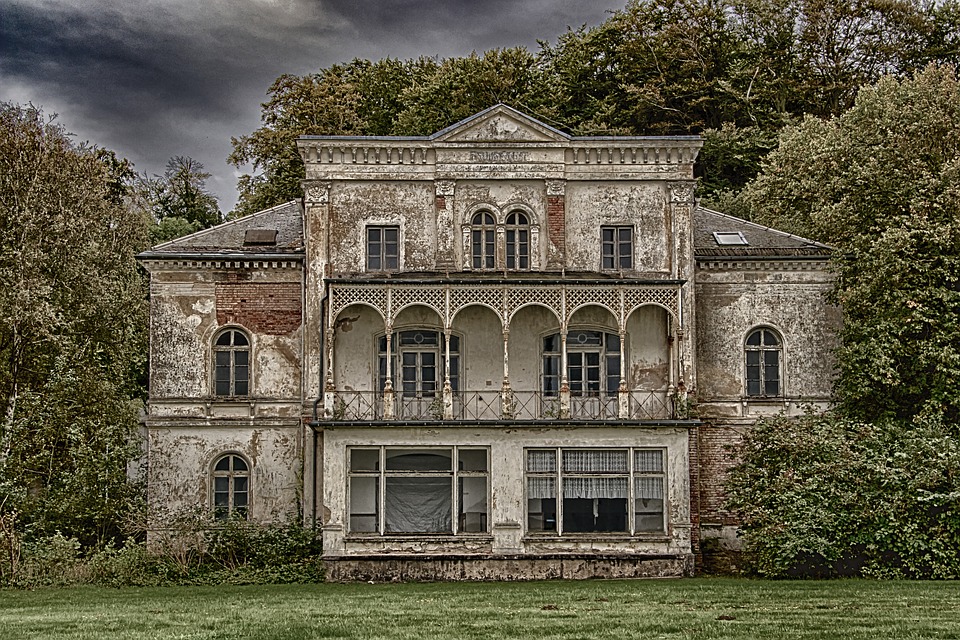Table Of Contents
Depreciation is a powerful tool that you can use to effectively eliminate any tax on your rental income. Depreciation is meant to track the deterioration of property over time. The owner of a rental property will depreciate (claim a deduction) their rental every year for 27.5 years.
It's often referred to as a "phantom expense" because you don't have to come out of pocket every year in order to claim a depreciation deduction. You simply get the deduction because you own rental property.
Related: How Investing in Real Estate Reduces Your Tax Rate
Some of our clients have reduced their effective tax rate, and I kid you not, to less than 10% by primarily receiving the majority of their income through real estate. The depreciation offsets so much of their income that they don't have to pay much in tax. How cool is that?
What Type of Property Can Be Depreciated?
Any property placed in service for business use can be depreciated. Because we are the Real Estate CPA, we're going to focus on rental real estate.
When you buy rental real estate, you cannot simply write off the cost of the purchase. Instead, you slowly deduct a portion of the purchase price, less land, over 27.5 years.
Did you catch that? I said "purchase price, less land" is what you can depreciate. What this means is that you cannot depreciate land because land does not deteriorate with time. This logically makes sense.
So before you begin taking your annual depreciation deduction, you must subtract the land value from the purchase price.
But how do you determine the land value? That's what I'm about to show you.
Before I do, know that you can depreciate components of your rental real estate too. Things like carpeting, land improvements, appliances, furniture and fixtures, etc. Anything on your property, except for land, can be depreciated.
Methods to Calculate Depreciation
In order to calculate annual depreciation, we must first calculate our "improvement ratio." There are many different methods to calculate the improvement ratio, and you can choose the method that is most advantageous to your situation as long as you can substantiate the chosen method with real numbers.
The higher the improvement ratio, the higher the amount of value allocated to the property and the lower amount allocated to land. This will ultimately result in a higher annual depreciation amount.
As an example, let's assume I buy a $100k property and I calculate a 90% improvement ratio. That means $90k of value is allocated to the building which is depreciated over 27.5 years and $10k is allocated to the land which cannot be depreciated. Compare that to an improvement ratio of 70% where $70k is allocated to buildings and $30k is allocated to land, you can see that the higher improvement ratio yields larger amounts of depreciation.
One caution for you: your improvement ratio can never be 100%. Land always has a value. Don't let your CPA use a 100% improvement ratio (we see this all the time, double check Form 4562 in the year you purchase a property - if the value placed into service = your purchase price, your CPA is using a 100% improvement ratio).
There are three primary methods to determine the improvement ratio. You can use all three each time you purchase a property or just use the one that you find easiest. Regardless of which method you use, make sure to document your approach and your findings. You don't want to be caught with your pants down during an audit. The three methods are:
- Property Tax Card
- Buyer/Seller Appraisals
- Replacement Cost and Land Sale Comps

Method One: the Property Tax Card
Property tax cards are developed by the city/county property assessor. Generally, the cards are digital representations of what the assessor thinks your property is worth. We find that it's extremely rare that the values listed on the property tax cards are anywhere close to the real market value of your property, but it's still a great tool to use to determine your improvement ratio.
To find the property tax card for your property, first go to google and type "[Property's County Name] assessor office." You will generally land on the property assessor office and there will be a link to search the property records of the county.
Once you find your property and open the property tax card, you're going to see plenty of values. Some counties are messier than others. The key is to find the most recent assessed value for improvements (sometimes "buildings") and land.
If the property tax card says your improvements are worth $95k and land worth $5k, then your improvement ratio is 95%. You would then apply that to the purchase price of your rental to determine the value you will allocate to improvements versus land.
This is a super easy method to use. You'll find that if you're investing in the same geographic area, all the ratios are pretty darn close to each other.
If you are in San Francisco, D.C. or NYC, the property tax cards will generally give you an improvement ratio of less than 50%. That's because land is so darn expensive in these areas and the government knows it. If that's you, I recommend exploring alternative methods to calculate your improvement ratio. Remember, the higher the improvement ratio, the more annual depreciation we get to deduct.
Method Two: Buyer/Seller Appraisals
If method one yields bad results or you just want more of a challenge, you can opt for method two which involves analyzing appraisals. Note that this method will cost you because appraisals aren't free.
When you're purchasing real estate, you will generally opt to have an appraisal done especially if a bank is involved. That appraisal can help you calculate the improvement ratio.
An appraisal that I had completed on one of my properties indicated that the value of the improvements was $147,816 and the value of the land is $20,000. This yielded a total appraised value of $167,816.
Related: Basics of Depreciation Recapture
Therefore calculating my improvement ratio was simple: $147,816 / ($147,816 + $20,000) = 88.08%
I then applied that number to my purchase price to find the value I needed to allocate to improvements and the remainder was allocated to land.
Method Three: Replacement Cost and Land Sale Comps
If method one and two don't scratch your tax analyzing itch, then method three is meant for you. This method is tougher and more time intensive so buckle up and get ready.
If you've ever applied for insurance for a property you own, you've likely heard of replacement cost. Replacement cost is the cost to construct a brand new building substantially equal in size, shape, and style to the one you currently own. Your appraisal report and insurance estimates will generally provide a value for replacement cost. Note that most insurance agents estimate the replacement cost of your property by analyzing several data sources, one of which may be the appraisal your property underwent.
Let's assume the replacement cost is $180k.
Moving on. Land sale comps can be pulled to help you estimate the value of the land that your property sits on. There are a variety of sources estimating land value such as third-party websites, county offices, and agents with MLS access. You'll want to pull at least three comps to substantiate your land value. Let's assume the land value per the comps you have pulled is estimated to be $20k.
You'll calculate your improvement ratio as so: $180k / ($180k + $20k) = 90%
You would then apply an improvement ratio of 90% to your purchase price to determine the improvement value that you can depreciate.
Conclusion
It's important to understand how depreciation works and how to calculate your annual depreciation value. To calculate depreciation, I don't feel one method is necessarily superior to another as long as you can substantiate, through documentation, how you arrived at your improvement value.
And remember, if a tax preparer is allocating 100% of the value to the improvements, they are totally forgetting that land cannot be depreciated and must be allocated some amount of the purchase price.

